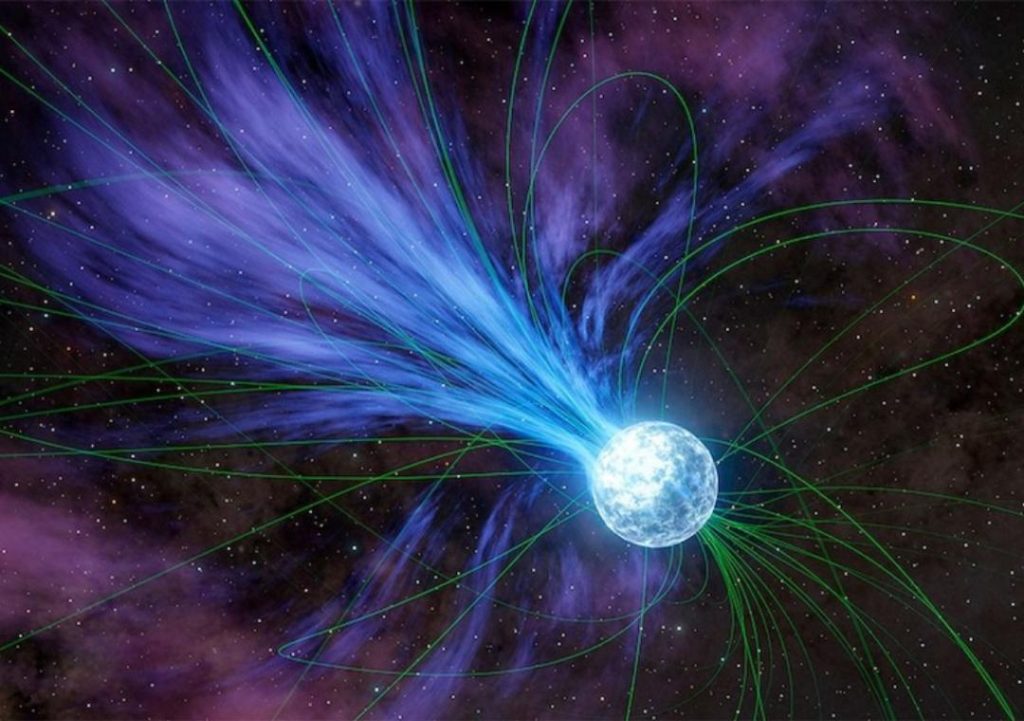
Gold & Platinum Created through Neutron Stars’ Explosions: Study
For centuries, humans have been fascinated by the origins of precious metals like gold and platinum. While we’ve long known that these metals are formed through geological processes on Earth, the exact mechanisms behind their creation have remained a mystery. However, a groundbreaking study led by Columbia University student Anirudh Patel has shed new light on the matter, revealing that magnetars – or highly magnetized neutron stars – played a crucial role in creating these metals through explosive events.
According to the study, magnetars exploded and released flares that contained elements like gold and platinum. These explosions, which occur approximately once per decade in the Milky Way galaxy and annually across the observable universe, are a result of the intense magnetic fields generated by these neutron stars.
The study’s findings were published in the journal Nature Astronomy, and offer a fascinating glimpse into the cosmic origins of these precious metals. But what exactly are magnetars, and how do they create gold and platinum?
What are Magnetars?
Magnetars are a type of neutron star, which is the incredibly dense remnant of a star that has undergone a supernova explosion. Neutron stars are formed when a massive star runs out of fuel and collapses under its own gravity, causing a massive explosion that expels its outer layers into space. The remaining core, composed of neutrons, is left behind, spinning extremely rapidly and emitting intense magnetic fields.
Magnetars are a specific type of neutron star that is characterized by its incredibly strong magnetic field. These fields are so powerful that they can outshine the entire star itself, making magnetars some of the brightest objects in the universe.
The Process of Gold and Platinum Creation
So, how do magnetars create gold and platinum? According to the study, the process begins when a magnetar experiences a massive surge in its magnetic field. This surge causes the star’s core to heat up, leading to the creation of heavy elements through a process known as rapid neutron capture, or r-process nucleosynthesis.
In this process, free neutrons in the magnetar’s core collide with atomic nuclei, causing them to absorb these neutrons and become heavier elements. The heavy elements that are created through this process include gold and platinum, as well as other precious metals like uranium and osmium.
When the magnetar explodes, it releases these heavy elements into space, where they can be dispersed throughout the galaxy. Over time, these elements can be incorporated into new stars and planets, including our own solar system.
The Implications of the Study
The study’s findings have significant implications for our understanding of the origins of precious metals. For centuries, scientists have believed that gold and platinum were formed through geological processes on Earth, such as plate tectonics and meteorite impacts. While these processes are undoubtedly important, the study suggests that magnetars may have played a crucial role in creating these metals through explosive events.
The study’s findings also have implications for our understanding of the universe as a whole. The discovery of gold and platinum in magnetar flares suggests that these elements may be more widespread throughout the galaxy than previously thought. This, in turn, could have significant implications for our understanding of the distribution of heavy elements in the universe.
Conclusion
The study led by Anirudh Patel offers a fascinating glimpse into the cosmic origins of precious metals like gold and platinum. The discovery of magnetars as the source of these metals challenges our current understanding of the universe and highlights the incredible complexity and beauty of the cosmos.
As we continue to explore the universe and uncover its secrets, we are reminded of the incredible mysteries that still await us. The study’s findings are a testament to the power of human curiosity and our drive to understand the world around us.
Source:






